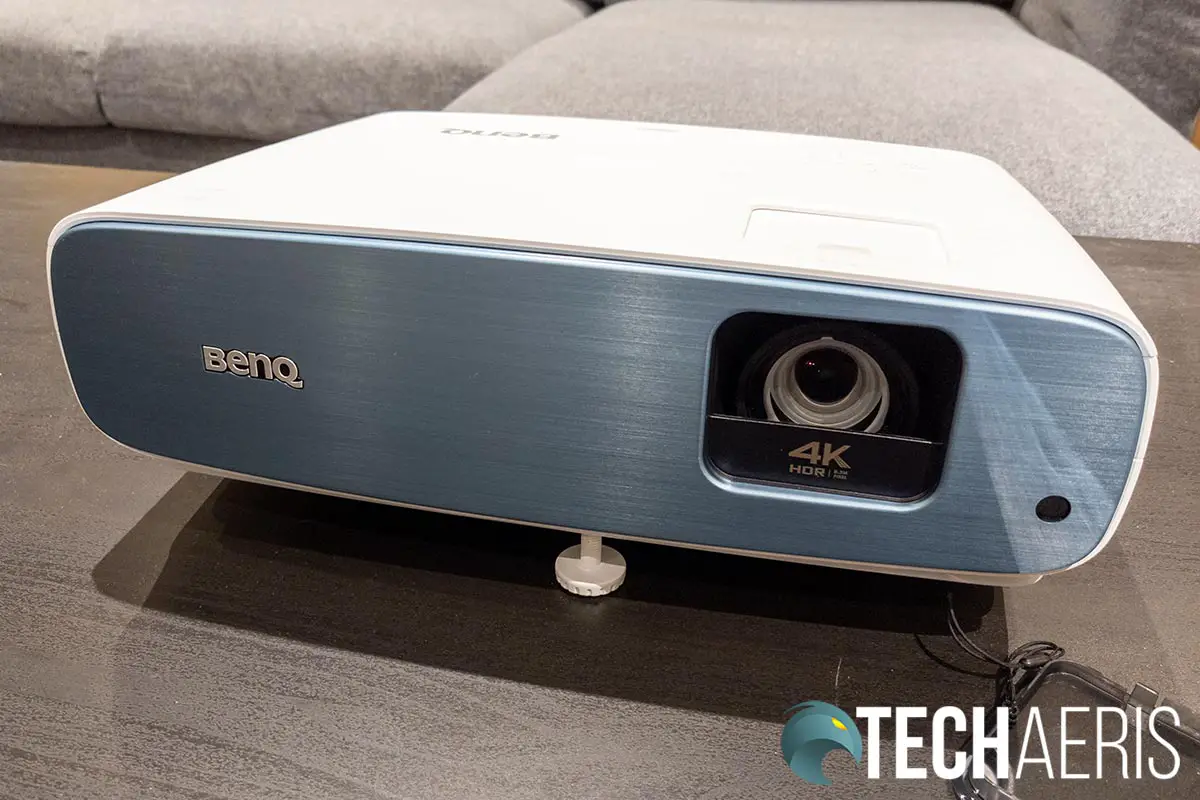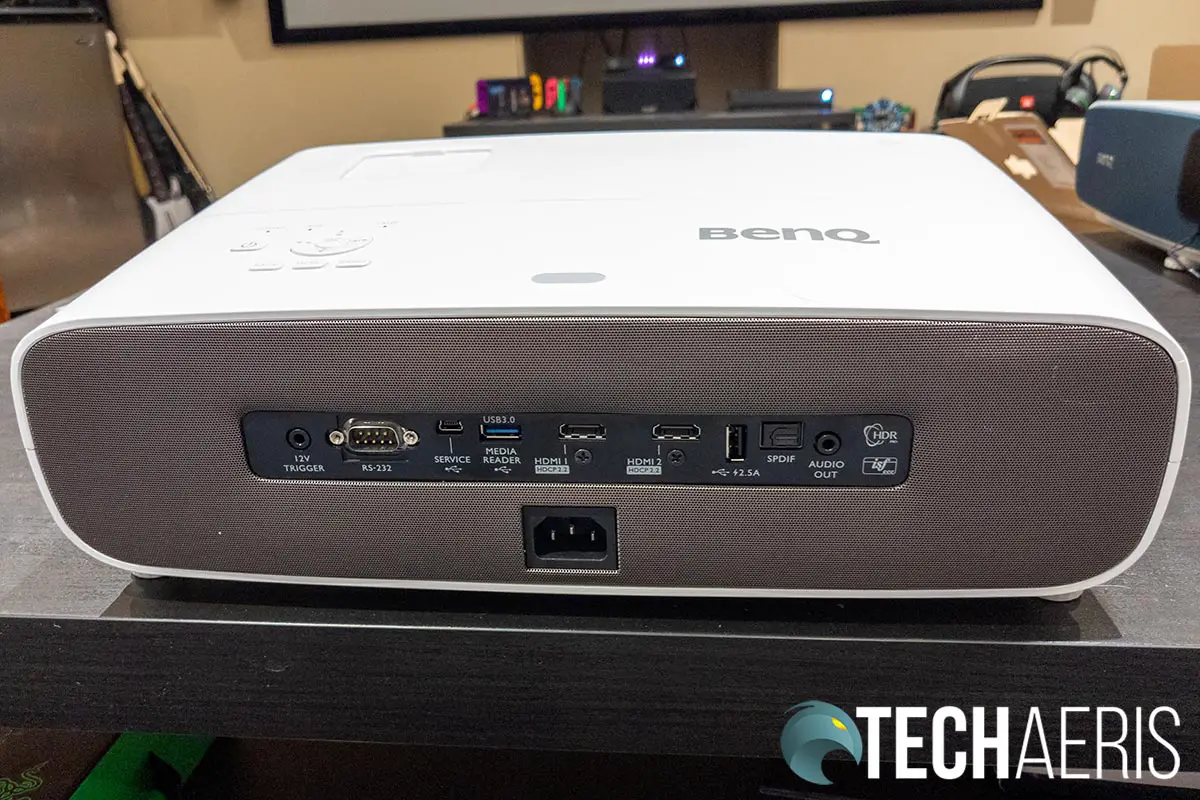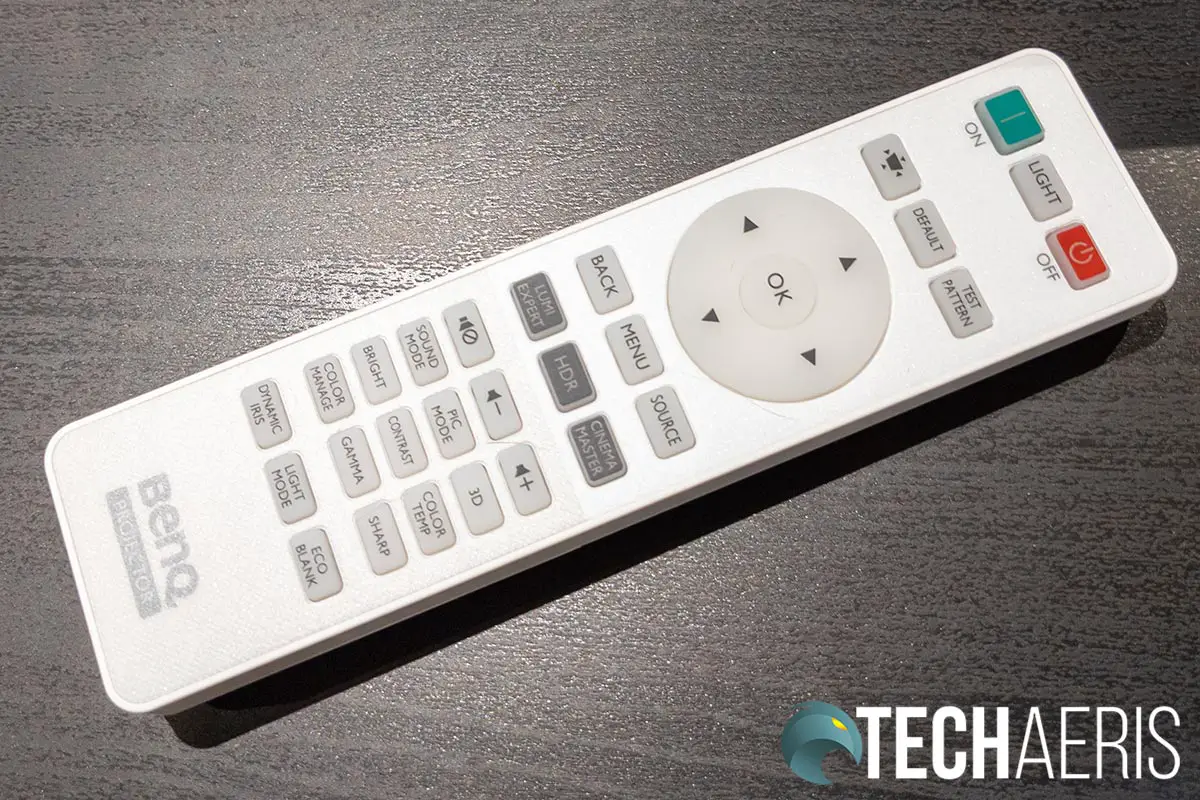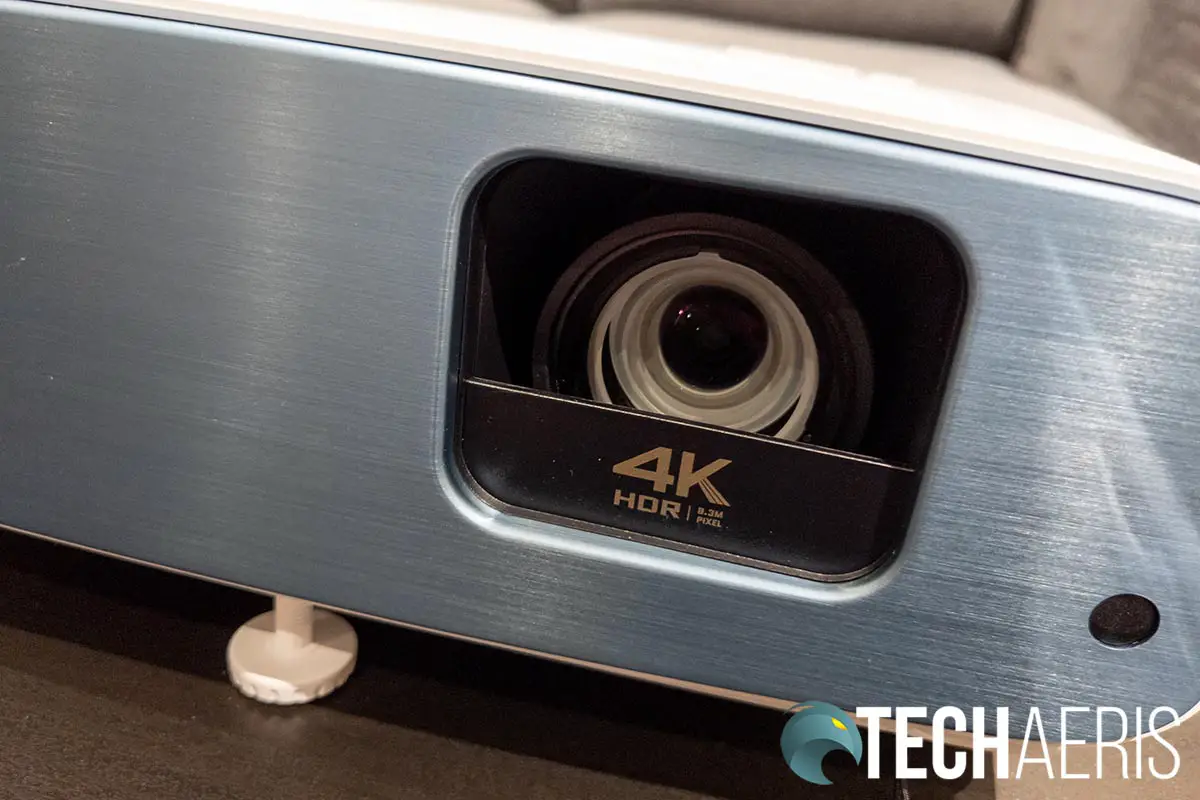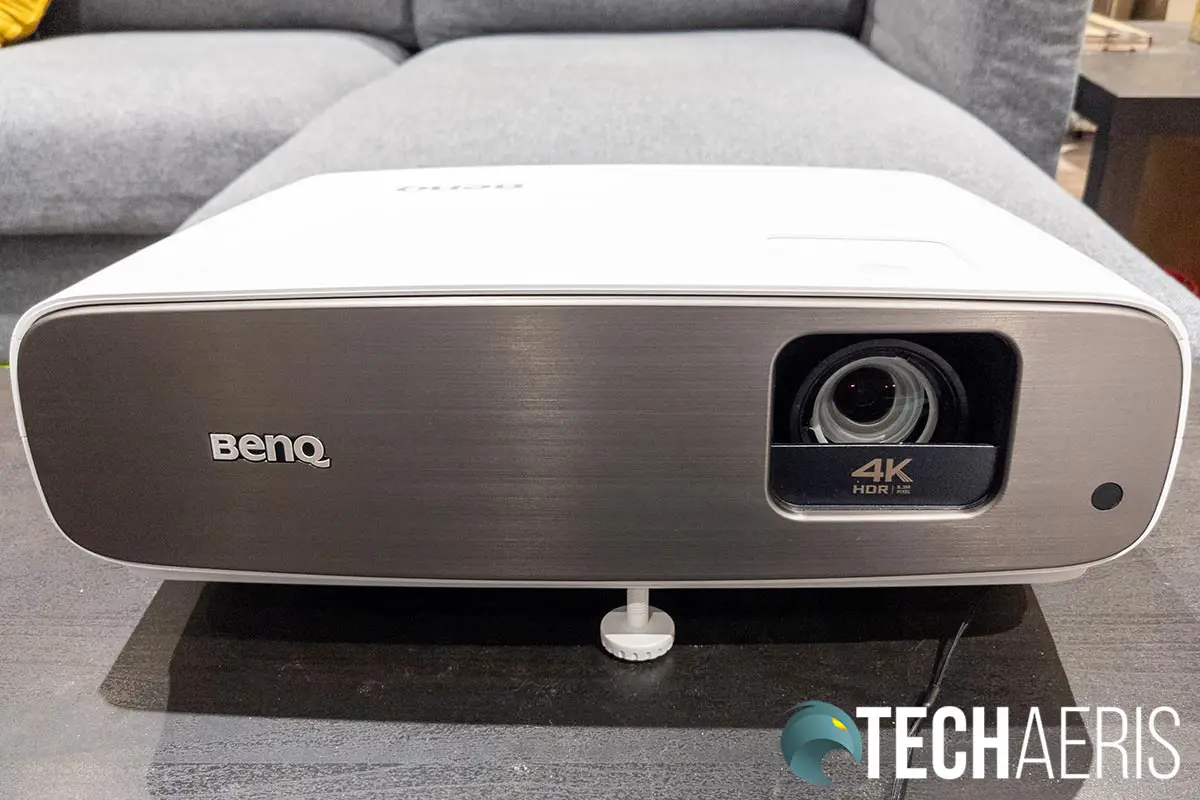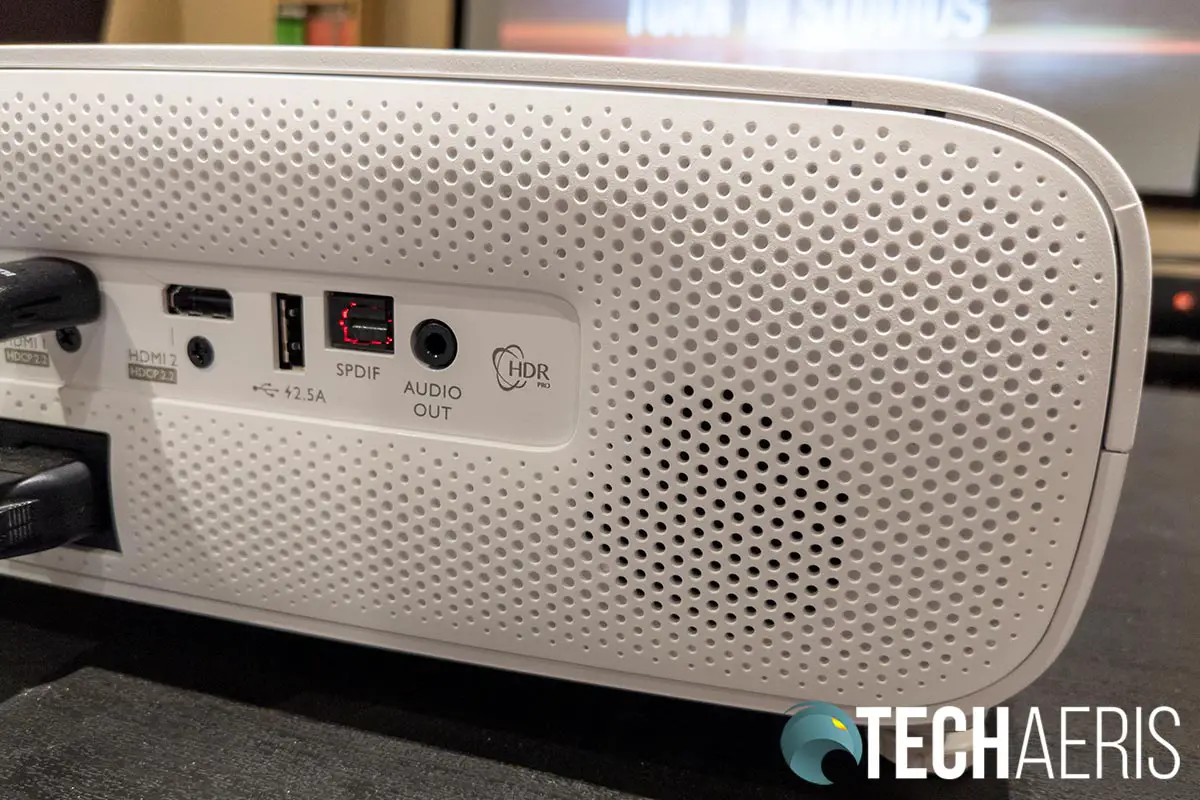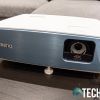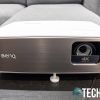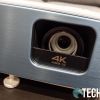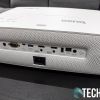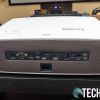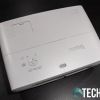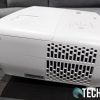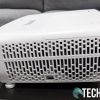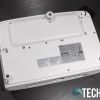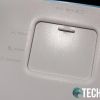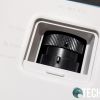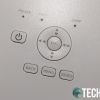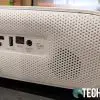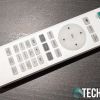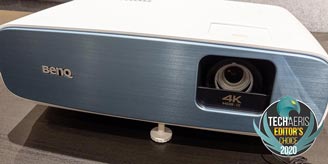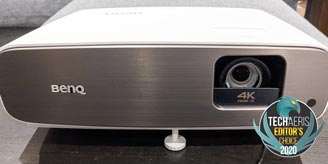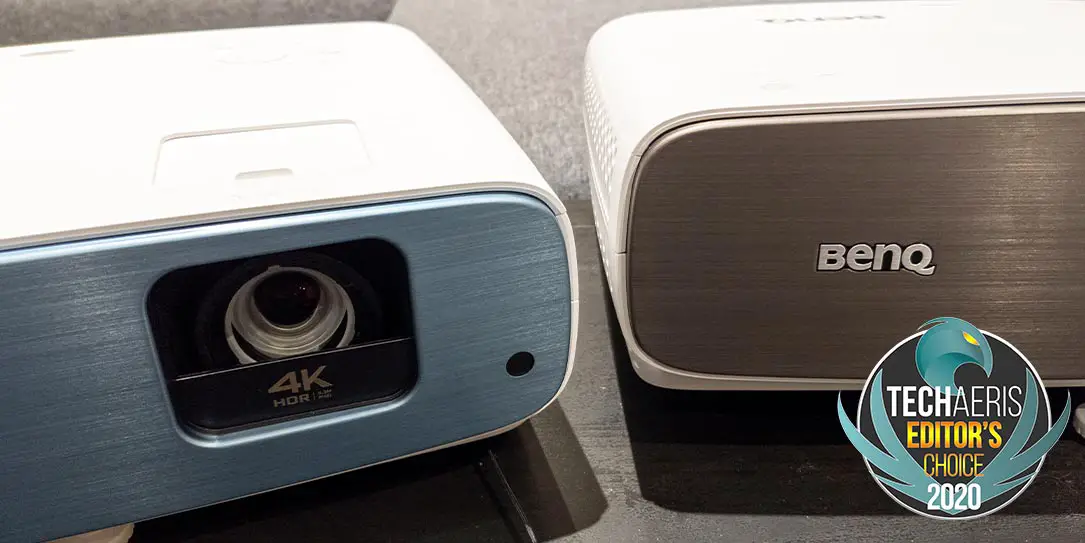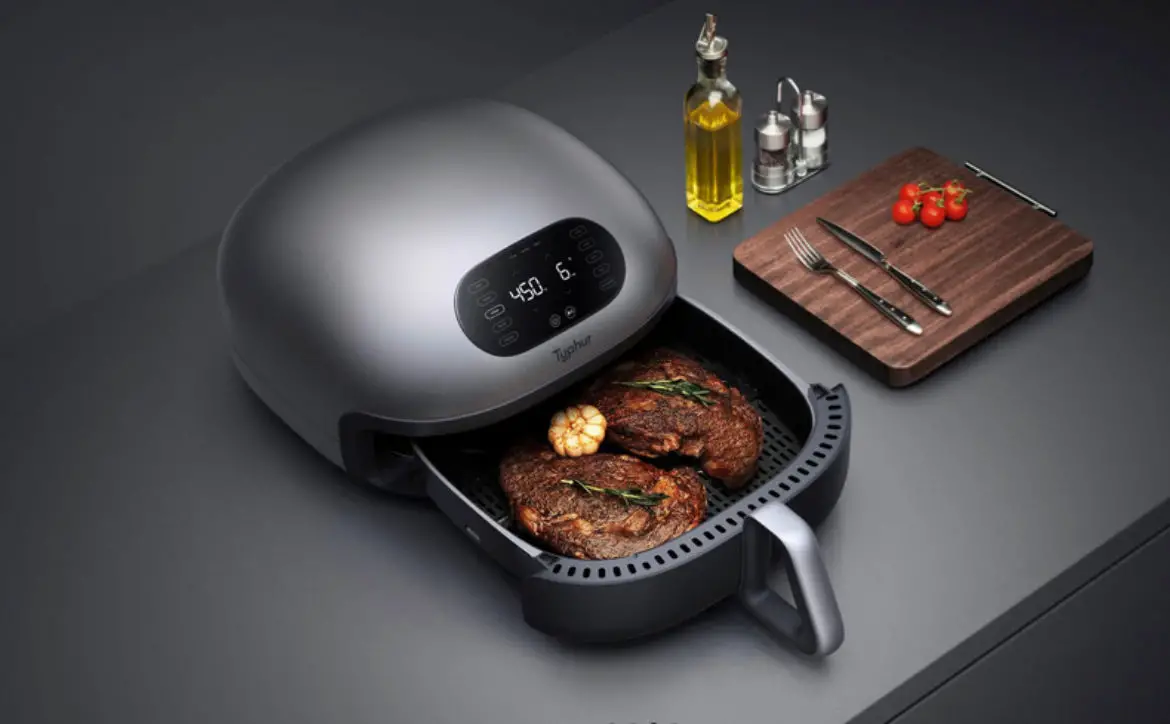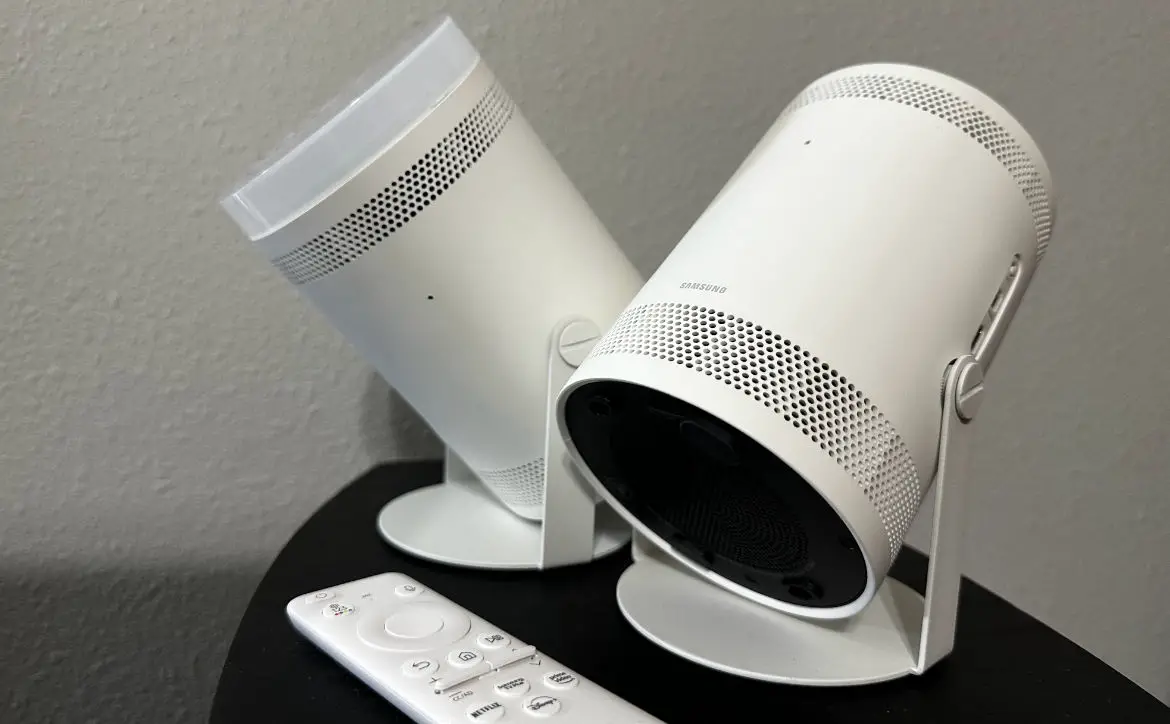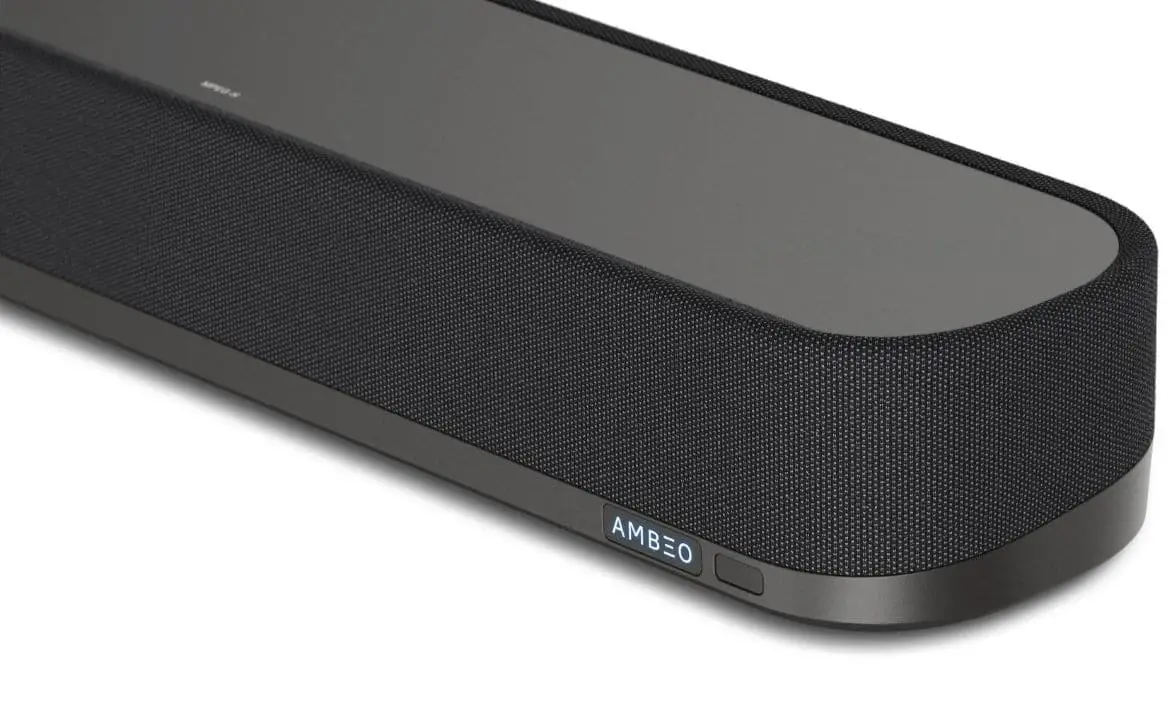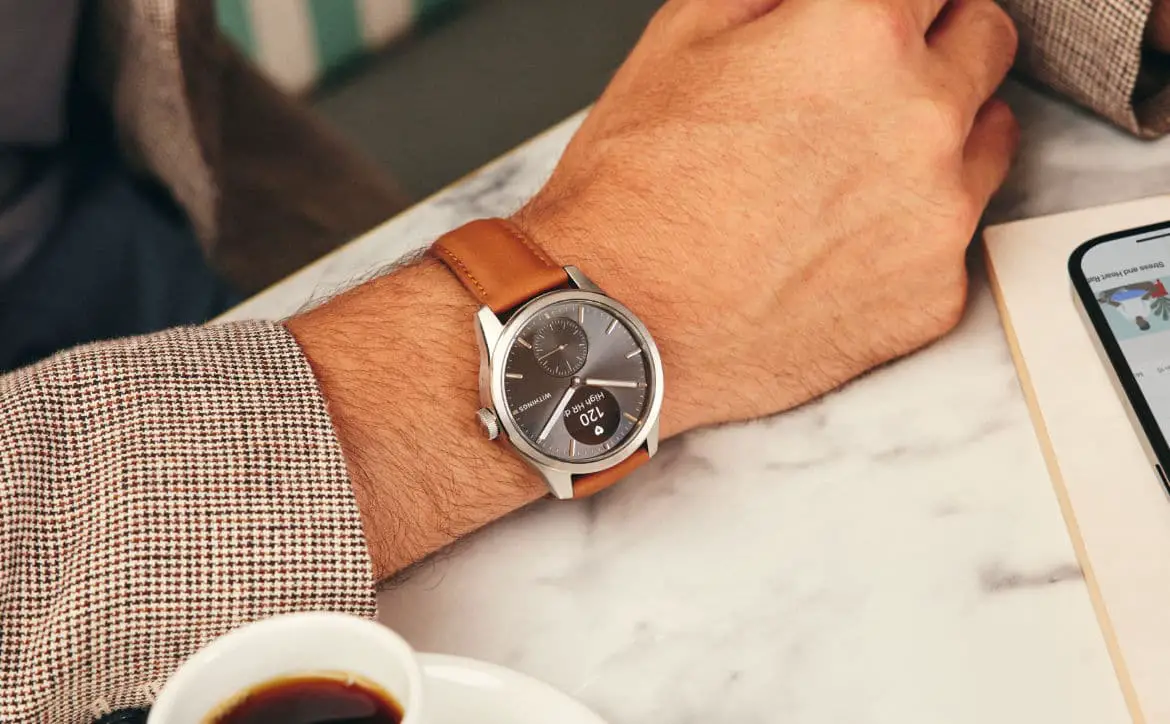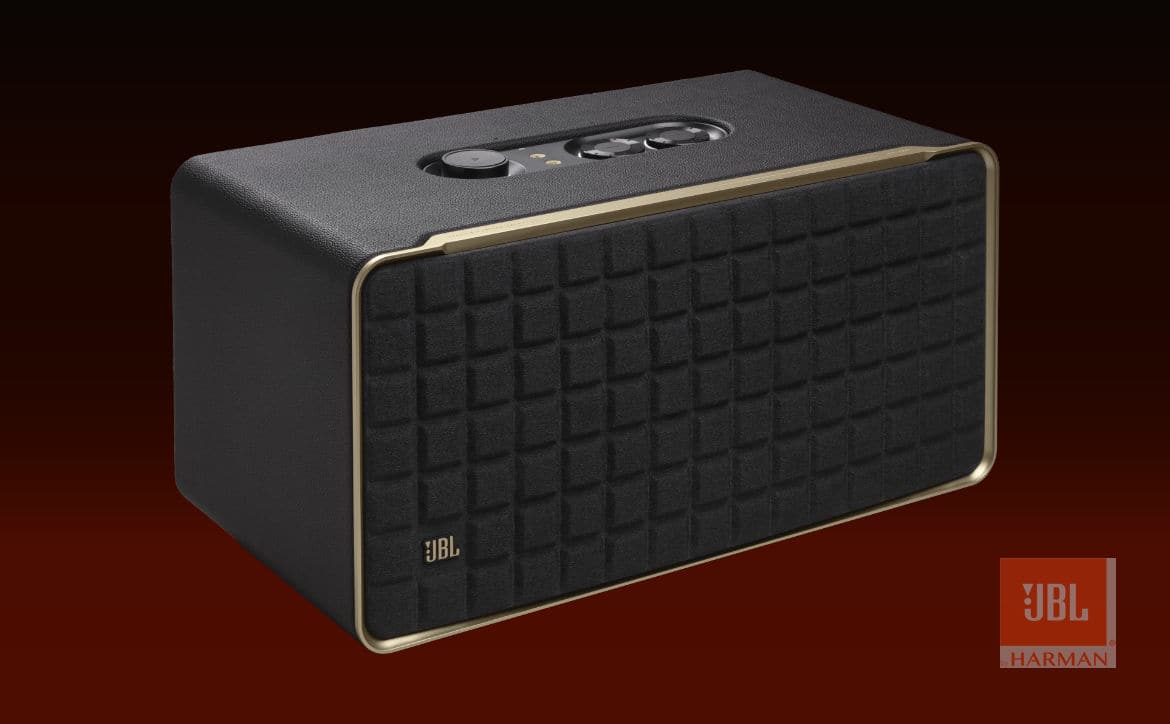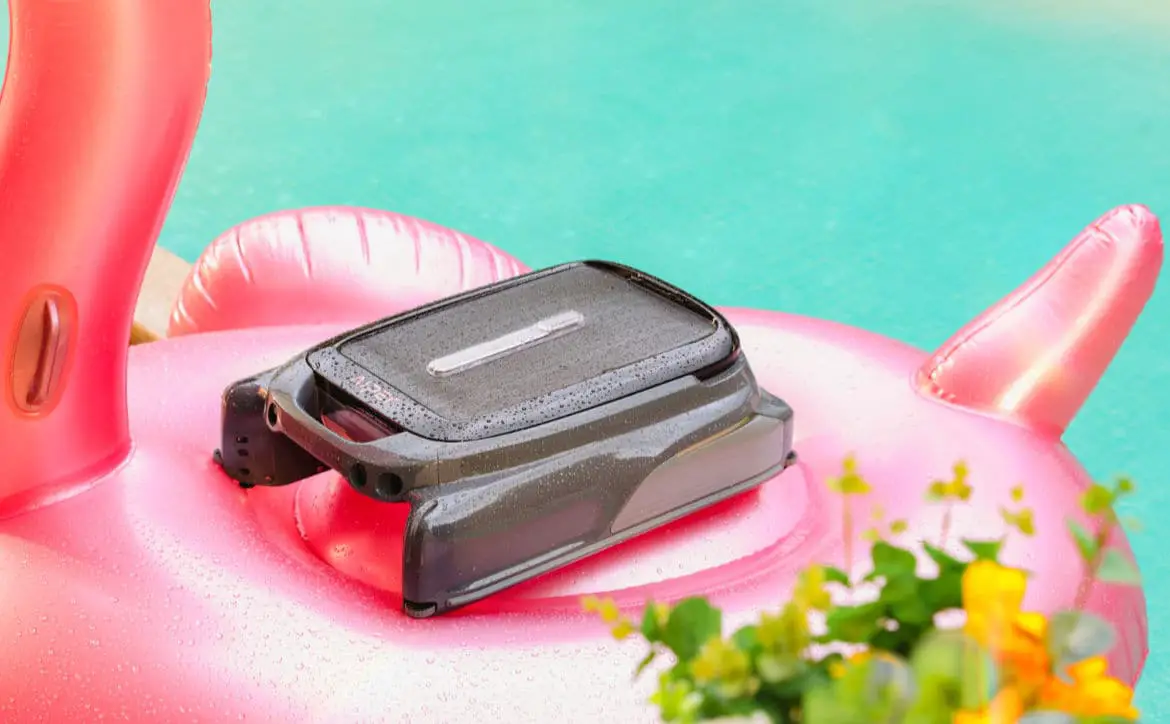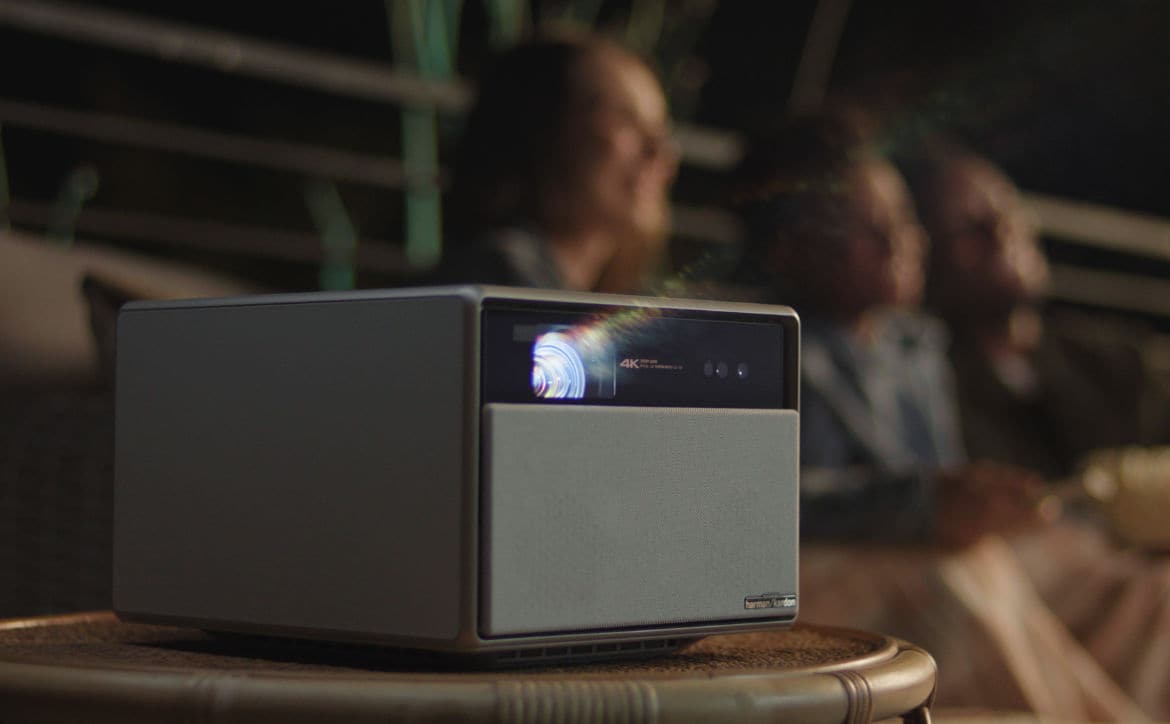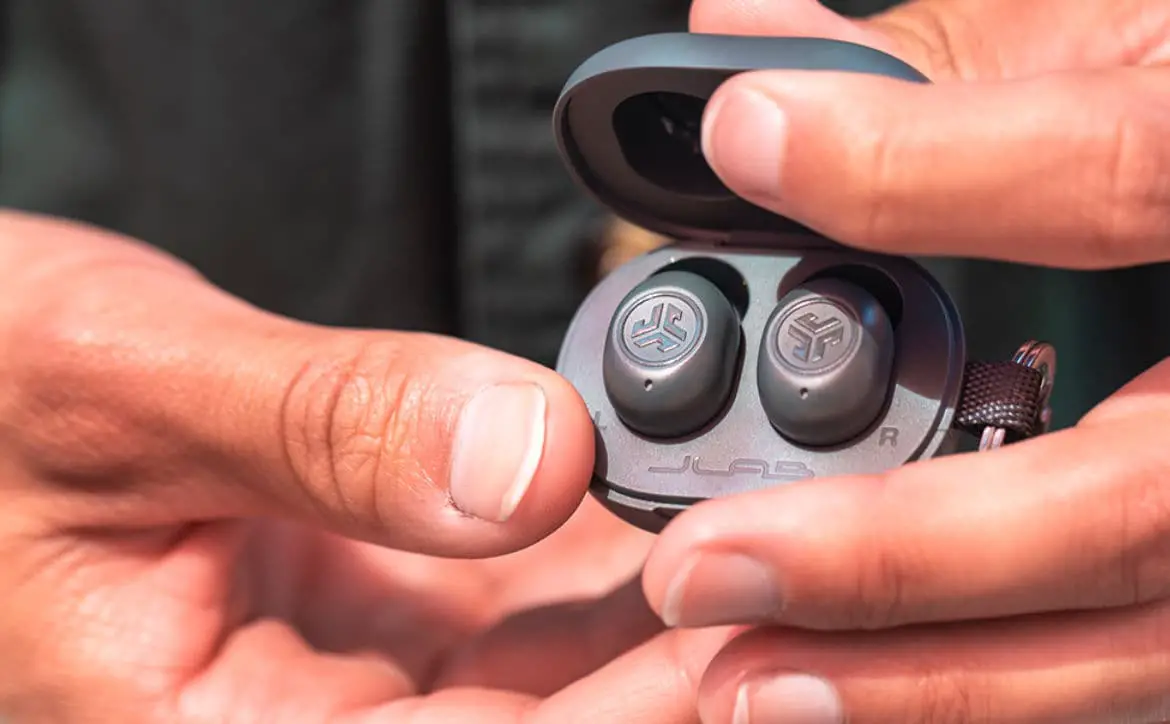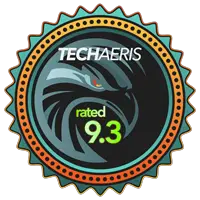
We’re playing a bit of catchup here and as you may have noticed, we just recently published our BenQ TK800M Sports Projector review. It’s definitely a solid and bright projector but the company has a newer version out. In addition, the company offers up a similarity styled version for cinema lovers. As such, we’ve decided to combine both into one due to the massive similarities and minor differences. While most of the images are of the TK850, the HT3550 is practically identical. Our BenQ TK850 & HT3550 review takes a look at a couple of new options from the company — one for sports and gaming, the other for cinema lovers. Read on for our full review and see why they both earned Editor’s Choice awards here at Techaeris.
Specifications
The BenQ TK850 and HT3550 4K projectors have the following features and specifications:
| Model | TK850 HT3550 |
| Projection System | DLP |
| Resolution | 4K UHD (3840 x 2160) |
| Resolution Support | VGA (640 x 480) to 4K UHD (3840 x 2160) |
| Brightness | TK850: 3000 ANSI Lumens HT3550: 2000 ANSI Lumens |
| Contrast Ratio (FOFO) | 30,000:1 |
| Display Color | 30 Bits (1.07 billion colors) |
| Native Aspect Ratio | Native 16:9 (6 aspect ratio selectable) |
| Light Source | Lamp |
| Light Source Wattage | 240W |
| Light Source Life | Normal: 4,000 hours Economic: 10,000 hours LampSave: 15,000 hours |
| Throw Ratio | 1.13 – 1.47 (100″ @ 8.2 feet) |
| Zoom Ratio | 1.3x |
| Lens Shift | Vertical +10% |
| Keystone Adjustment | 1D, Vertical ± 30 degrees |
| Projection Offset | 100% |
| Clear Image Size (Diagonal) | 40″~200″ |
| Image Size | 30″ ~ 300″ |
| Horizontal Frequency | 15K – 135KHz |
| Vertical Scan Rate | 23 – 120Hz |
| Picture Mode | TK850: Bright / Living Room / Cinema / Sports / Silence / 3D / User 1 / HDR / HLG HT3550: Bright / Vivid TV / Cinema (Rec. 709) / D. Cinema / Silence / User 1 (HDR / HLG / ISF Night / ISF Day / 3D) |
| Color Wheel Segment | TK850: 4-Segment (RGBW) HT3550: 6-Segment (RGBRGB) |
| Rec.709 Coverage | TK850: 98% HT3550: 100% |
| DCI-P3 Coverage | HT3550: 95% |
| Speaker | Chamber Speaker 5W x2 |
| Interface | • HDMI-1 (HDCP2.2) • HDMI-2 (HDCP2.2) • USB Type-A (5V/2.5A power) • USB Type-A (Media reader/FW download) • USB Type mini B (FW download/service) • Audio out (3.5mm Mini Jack) • Audio out (S/PDIF) • RS232 In (D-sub 9pin, male) • DC 12V Trigger (3.5mm Jack) • 2x IR Receiver (Front/Top) • Security Bar, Kensington Lock |
| HDR | Yes (HDR10, HLG) |
| CinemaMaster Audio+ | Yes |
| HDTV Compatibility | 720p 50/60Hz, 1080i 50/60Hz, 1080p 24/25/30/50/60Hz, 2160p 23/24/25/30/60Hz |
| Power Supply | VAC 100 ~ 240 (50/60Hz) |
| Typical Power Consumption | Max 350W, Normal 340W, Eco 280W |
| Standby Power Consumption | 0.5W Max. at 100 ~ 240VAC |
| Acoustic Noise (Typ./Eco.) | 30/28 dBA |
| Operating Temperature | 0~40℃ |
| Dimensions (W x H x D) | 380 x 127 x 263mm |
| Net Weight | 4.2 kg/9.2 lb |
What’s in the box
- BenQ TK850 Sports Projector or BenQ HT3550 CinePrime Projector
- Remote Control w/ 2x AAA Battery
- 3m Power Cord
- User Manual CD
- Quick Start Guide
- Warranty Card
Design
TK850 and HT3550 Projectors
In addition to some internal specification differences, the BenQ TK850 Sports Projector and BenQ HT3550 CinePrime Projectors have quite a different design to it, and I rather like the changes. While still rectangular in shape with rounded edges, the newer design is less bulbous looking. Still mostly off-white in colour, the front measures 15-inches by 4 3/4-inches and is a more muted blue color on the TK850 and bronze on the HT3550. The BenQ logo is on the left (when looking at the front) while the lens opening towards the right is rectangular in shape, roughly 3-inches wide and 2 1/2-inches in height. The IR sensor is on the far right side of the front. The projector is about 10-inches in depth.
The top has a few notable differences as well. The BenQ logo is printed in the lower right where the control panel used to be. The control panel is now on the lower left below the focus, zoom, and lens shift dials. The control panel features the circular navigation pad as well as buttons for power, menu, and source. There are three LEDs above it for power, temperature, and lamp warnings. As for the focus, zoom, and lens shift dials, BenQ has added a sliding door cover over it. This is a nice touch as it keeps the top looking cleaner. Oh, and the lens shift dial is a new addition, something the TK800M didn’t have.
The left side of the projector (when looking at the front) houses two fans behind a vent. The right side, on the other hand, only has a single fan behind a vent as well as a lock slot.
The back is noticeably different as well. The entire back is covered with small indented holes on the TK850 while the HT3550 is more of a screen finish. While the TK850 is off-white on the back, the HT3550 is bronze like the front. On the bottom left and right of the TK850, these holes are cut out all the way through for the dual 5W speakers. Centered across the back on both are your ports which include (from left to right when looking at the back) a 12V trigger, RS-232, USB Type-B service port, USB-A 3.0 media reader port, HDMI 1 and 2 HDCP 2.2 inputs, USB-A 2.5A powered port, SPDIF optical port, and a 3.5mm audio out jack. The power port is centered near the bottom of the back of the projector.
Finally, the bottom has three twistable feet — one centered on the front and two in each back corner — for aligning the projector when it’s on a smooth surface. There are also three M4 x 8L screw holes for ceiling mounting.
While I didn’t mind the look of the TK850M, I actually love the look of the TK800 and HT3550 projectors. They just look much sleeker and classier overall.
Remote Control
The remote for the TK850 and HT3550 is similar to that of the TK800M but is reduced by six buttons. It’s roughly 7-inches by 1 3/4-inches and has nine rows of buttons and a direction pad for projector control. The top row of buttons is your power on, light (for remote button backlighting), and power off button. The next cluster of three buttons is for keystone correction, default settings, and test pattern.
Below the top group of nine buttons is the circular directional pad with four direction arrows and a center OK button. This is used for navigation menu selections and selecting specific options.
Underneath the directional pad are two more rows for back, menu, source, lumi expert, HDR, and cinema master. The 12 button grid below that is for volume and playback control as well as sound mode and picture adjustments. Finally, the bottom three buttons are for dynamic iris, light mode, and eco settings.
While the remote does have six fewer buttons than its predecessor, all the more useful buttons are still present.
Display
As mentioned in the TK800M review, the TK850 and HT3550 both use four 1920×1080 micromirror arrays to project 8.3 million distinct pixels for 4K resolution. Rather than get into all the technicalities of this, you can view BenQ’s simplified explanation of how this works on their website. One unfortunate side effect of this chip, as I’ve explained before, is that you will get a light “shadow border” around your screen. In other words, once you’re set up and focused with the main image adjusted to the borders of your screen, you will see a faint light border roughly 2-inches around it (when viewed at roughly 100-inch screen size).
One key difference between the TK800M and the TK850/HT3550 is that the throw ratio is much shorter on the newer line. Instead of having to set the projector at almost 11′ to get a 100″ picture with the TK800M, the newer ones can be set at just over 8′ to get the same picture size. In fact, the maximum throw distance on the newer projectors is lower than the shortest throw rate on the older models. In addition, the newer projectors also come with a 10% vertical lens shift (the TK800M doesn’t have lens shift) and a 1.3x zoom as opposed to 1.1x.
BenQ TK850
Let’s just put it this way. When your son texts you to specifically tell you that the “new projector has some excellent picture — waaaaay better than the last one,” you know the picture quality is good. Especially when he’s not really one to comment on stuff like that. This is interesting because according to BenQ, the TK800M and TK850 use the same 0.47″ DMD DLP chip with four 1920×1080 micromirror arrays.
That being said, there are some key differences between the TK800M and the TK850M. The biggest is the huge increase in contrast ratio from 10,000:1 to 30,000:1. In addition, the Rec. 709 color gamut coverage has increased from 96% to 98%. To be honest, that’s pretty minor but the contrast ratio makes a huge difference.
At any rate, the image quality is fantastic, nice and crisp with great colours depending on what your settings are set to. With 3,000 lumens, the picture is nice and bright as well and suited for just about any setup location. Speaking of, display options on the BenQ TK850M include (note * indicates options different from the HT3550):
- Picture
- Picture Mode (Bright, Living Room*, Cinema, Sports*, User), Brightness, Contrast, Color, Tint, Sharpness, Advanced (Gamma Selection, HDR Brightness, Color Temperature, Color Management, Cinema Master (Color Enhancer, Flesh Tone, Pixel Enhancer 4K, Motion Enhancer 4K), Noise Reduction, Dynamic Iris, Brilliant Color, Light Mode), Reset Current Picture Mode
- Display
- Overscan Adjustment, 3D, HDR (On/Off), Silence
- Installation
- Projector Position, Auto Keystone, Test Pattern, Aspect Ratio, 12V Trigger, High Altitude Mode
- System Setup Basic
- Language, Splash Screen, Auto Off, Direct Power On, Source Rename, Auto Source, Sound
- System Setup Advanced
- Light Settings, HDMI Settings, Password, Key Lock, LED Indicator, Reset All Settings, Firmware Upgrade
- Information (displays the following)
- Source, Picture Mode, Resolution, Color System, Color Gamut, Light Usage Time, 3D Format, Firmware Version, Service Code
As you can see, there are plenty of settings (as is the norm) to tweak and fine tune your image quality to your liking.
BenQ HT3550
The BenQ HT3550 has a great crisp picture as well but goes one step further. With 100% Rec. 709 color gamut coverage, the HT3550 also has 95% DCI-P3 coverage. Unfortunately, the lumens on this one are only 2,000. That being said, the trade off is fair if you have a darker room setup for your home theatre. While the TK850 is nice and bright and vivid, the HT3550 is excellent for watching movies — especially in one of the two cinema mode settings. The image on the screen honestly reminds me of sitting in an actual movie theatre.
Of course, there are numerous settings that you can adjust on the HT3550. These include (note * indicates options different from the TK850):
- Picture
- Picture Mode (Bright, Vivid TV*, Cinema, D. Cinema*, User), Brightness, Contrast, Color, Tint, Sharpness, Advanced (Gamma Selection, HDR Brightness, Color Temperature, Color Management, Cinema Master (Color Enhancer, Flesh Tone, Pixel Enhancer 4K, Motion Enhancer 4K), Noise Reduction, Dynamic Iris, Brilliant Color, Light Mode), Reset Current Picture Mode
- Display
- Overscan Adjustment, 3D, HDR, Silence
- Installation
- Projector Position, Auto Keystone, Test Pattern, Aspect Ratio, 12V Trigger, High Altitude Mode
- System Setup Basic
- Language, Splash Screen, Auto Off, Direct Power On, Source Rename, Auto Source, Sound
- System Setup Advanced
- Light Settings, HDMI Settings, Password, Key Lock, LED Indicator, Reset All Settings, ISF*, Firmware Upgrade
- Information (displays the following)
- Source, Picture Mode, Resolution, Color System, Color Gamut, Light Usage Time, 3D Format, Firmware Version, Service Code
Again, there are plenty of settings (as is the norm) to tweak and fine tune your image quality to your liking.
Performance
The actual performance of the BenQ HT3550 and TK850 was about the same as the TK800M. Both projectors take about 30 seconds or so to start up. The fan is slightly quieter than its predecessor as well. Again, when switching between HDR and non-HDR content the screen does go black for 15 seconds or so.
Aside from that, I had no complaints with either projector when it came to movie or TV watching, as well as gaming. I did prefer the TK850 for gaming however due to the increased brightness output. On that note, I didn’t see any noticeable lag for any games I play regularly which include Forza Horizon 4, Gears 5, and the like.
Sound Quality
The sound quality has also improved on the TK850 and HT3550 projectors. Instead of a single 5W speaker, the new projectors feature two 5W speakers. While you’re still lacking in bass, they are quite crisp and loud and will definitely do in a pinch if you’re in a place that doesn’t have a proper speaker setup.
Price/Value
Both the BenQ TK850 and HT3550 have an MSRP of US$1499. While the TK800M is a couple of hundred dollars cheaper, it’s well worth getting one of these two for the added features and minor bump in price.
To be honest, it’s a tough choice between the two. At the end of the day, it depends on the lighting in your home theatre room as well as the type of content you consume the most. Personally, even though my room is pretty dark due to it being in the basement, I do prefer the brightness of the TK850 for gaming. If you’re still undecided, BenQ has put together a quick little buying guide between the two to help you decide.
Wrap-up
As I mentioned in the display section, you know you have a winner on your hands when your kid comments on the picture quality. Both the BenQ TK850 and HT3550 offer great picture, albeit slightly different for each. Crisp and clear, both offer excellent picture quality as well as decent options like lens shift and HDR support. As a result, we’ve chosen to dole out our Editor’s Choice Award for both the TK850 and HT3550. As it currently stands, when I do upgrade, it will be to one of these two projectors.
In some of our articles and especially in our reviews, you will find Amazon or other affiliate links. Any purchases you make through these links often result in a small amount being earned for the site and/or our writers. Techaeris often covers brand press releases. Doing this does not constitute an endorsement of any product or service by Techaeris. We provide the press release information for our audience to be informed and make their own decision on a purchase or not. Only our reviews are an endorsement or lack thereof. For more information, you can read our full disclaimer.
Last Updated on February 13, 2021.

